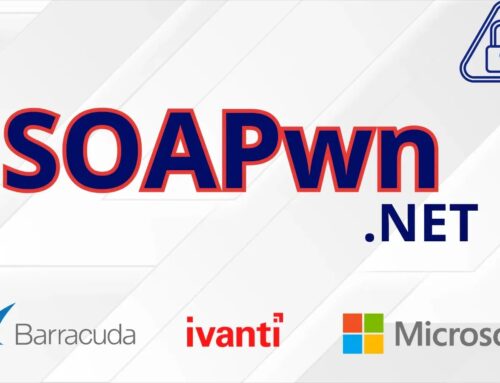
RDP vs SSH Comparison – Features, Protocols, Security, And Use Cases
RDP vs. SSH: Navigating Remote Access Protocols
Remote access protocols are fundamental to modern IT operations. They empower organizations to manage systems, facilitate remote work, and ensure operational continuity. Among the most prevalent are Remote Desktop Protocol (RDP) and Secure Shell (SSH). Both enable control over distant computers, yet their methodologies, security postures, and ideal use cases diverge significantly. Understanding these differences is critical for IT professionals, security analysts, and developers aiming to implement robust and secure remote access solutions.
Understanding Remote Desktop Protocol (RDP)
RDP, a proprietary protocol developed by Microsoft, delivers a graphical interface for remote network connections. It allows users to control a remote computer with a full desktop experience, complete with mouse and keyboard input, just as if they were sitting directly in front of it. This visual fidelity makes RDP highly intuitive for many users.
RDP Features and Functionality
- Graphical User Interface (GUI): Provides a complete desktop experience, ideal for non-technical users or tasks requiring visual interaction.
- Multi-Channel Support: Encapsulates various virtual channels, including display data, device redirection (printers, USB drives), and clipboard sharing.
- Audio and Video Streaming: Supports the transmission of audio and video, enhancing the user experience.
- Printer and Drive Redirection: Enables the use of local printers and access to local drives from the remote session.
RDP Security Considerations
While convenient, RDP has been a frequent target for attackers due to its widespread use. Common vulnerabilities include:
- Brute-Force Attacks: Weak or easily guessed passwords can lead to unauthorized access.
- NLA Bypass Vulnerabilities: Network Level Authentication (NLA) enhances security, but vulnerabilities can sometimes bypass it. For example, CVE-2019-0708, also known as “BlueKeep,” allowed unauthenticated remote code execution without NLA.
- Credential Theft: Sophisticated attacks can steal credentials during an RDP session.
- Man-in-the-Middle (MitM) Attacks: If not properly secured with TLS/SSL, RDP traffic can be intercepted.
Understanding Secure Shell (SSH)
SSH is a cryptographic network protocol for operating network services securely over an unsecured network. It provides a secure channel over an untrusted network in a client-server architecture, connecting an SSH client application with an SSH server.
SSH Features and Functionality
- Command Line Interface (CLI): Primarily used for command-line access, ideal for server administration, scripting, and development tasks.
- Strong Encryption: Utilizes robust encryption algorithms to protect data in transit, including authentication credentials.
- Authentication Methods: Supports various strong authentication methods, including password-based, public key-based, and multi-factor authentication.
- Port Forwarding (Tunneling): Allows secure tunneling of arbitrary network services over an SSH connection, bypassing firewalls and securing otherwise unencrypted traffic.
- File Transfer: Includes SFTP (SSH File Transfer Protocol) and SCP (Secure Copy Protocol) for secure file transfers.
SSH Security Considerations
SSH is designed with security in mind, yet misconfigurations or weak practices can introduce vulnerabilities:
- Weak Passwords: Brute-force attacks can target password-authenticated SSH sessions.
- Improper Key Management: Compromised or poorly managed SSH keys can grant unauthorized access.
- Outdated SSH Versions: Older versions of SSH or SSH clients might have known vulnerabilities, such as those related to specific cryptographic algorithms.
- Software Vulnerabilities: Implementation flaws in SSH clients or servers can be exploited. For instance, vulnerabilities in OpenSSH, while rare, do occur, necessitating regular updates.
RDP vs. SSH: A Direct Comparison
While both protocols enable remote access, their core functionalities and ideal use cases differ significantly.
Protocol Design and Interaction
- RDP: Operates at the presentation layer, delivering a full graphical environment. It’s designed for users who need a rich, interactive desktop experience.
- SSH: Operates primarily at the application layer, focusing on secure command-line access and data transfer. It’s built for efficiency and automation.
Security Mechanisms
- RDP: Relies on encryption (often TLS) and authentication. However, its exposure via a GUI can make it a larger attack surface if not properly secured (e.g., strong passwords, NLA, VPN integration).
- SSH: Inherently built for security with strong encryption and robust authentication methods like public-key cryptography. This makes it generally more secure for server administration and automated tasks.
Use Cases
- RDP:
- Remote desktop support and troubleshooting.
- Accessing specific applications that require a graphical interface.
- Enabling remote work for employees needing a full Windows or Linux desktop.
- SSH:
- Server administration and maintenance (Linux/Unix).
- Code deployment and version control.
- Secure file transfers (SFTP/SCP).
- Tunneling and port forwarding for secure access to internal services.
- Automation and scripting.
Best Practices for Securing Remote Access
Regardless of the protocol chosen, securing remote access is paramount. Adhering to best practices helps mitigate risks associated with both RDP and SSH.
Remediation Actions for RDP and SSH
- Strong Authentication: Always use strong, complex passwords that are unique for each account. Implement multi-factor authentication (MFA) for all remote access points.
- Network Level Authentication (NLA) for RDP: Enable NLA to require authentication before a full graphical session is established, reducing exposure to certain pre-authentication vulnerabilities.
- Public-Key Authentication for SSH: Prioritize SSH key-based authentication over password-based authentication. Ensure keys are securely stored and regularly rotated.
- Restrict Access: Limit RDP and SSH access to only necessary users and IP addresses. Implement firewall rules to restrict incoming connections to specific ports and source IPs.
- VPN Integration: Use a Virtual Private Network (VPN) as the primary method of accessing internal networks, layering security around RDP and SSH connections.
- Regular Updates and Patching: Keep operating systems, RDP clients/servers, and SSH clients/servers (e.g., OpenSSH) fully patched to address known vulnerabilities like those leading to BlueKeep (CVE-2019-0708) or similar exploits.
- Disable Unnecessary Services: Eliminate any unneeded services on remote-facing machines to reduce the attack surface.
- Logging and Monitoring: Implement robust logging and regularly monitor RDP and SSH access logs for suspicious activity, failed login attempts, or unusual connection patterns.
- Change Default Ports: While not a security panacea, changing default RDP (3389) and SSH (22) ports can deter opportunistic scanning and automated attacks.
- Session Timeouts: Configure inactive session timeouts to automatically disconnect users after a period of inactivity.
Summary
Both RDP and SSH are indispensable tools for managing remote systems, each excelling in different scenarios. RDP provides a rich graphical experience suitable for user-centric tasks and remote desktops, while SSH offers secure command-line control and robust data transfer capabilities, making it ideal for system administrators and developers. The choice between them depends on the specific requirements of the task. However, irrespective of the protocol, adopting stringent security practices—including strong authentication, regular patching, access restrictions, and continuous monitoring—is paramount to safeguarding organizational assets from evolving cyber threats.





